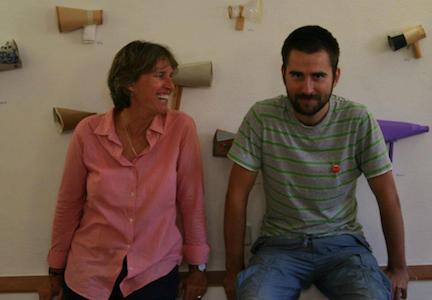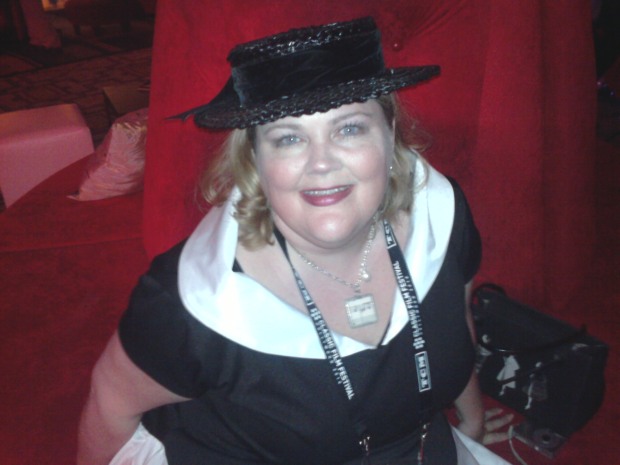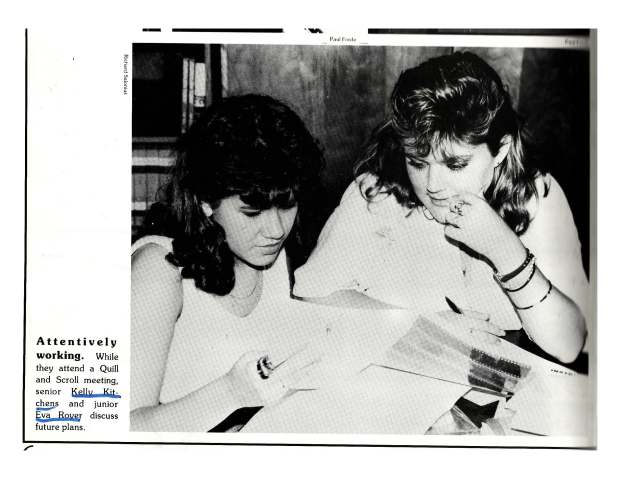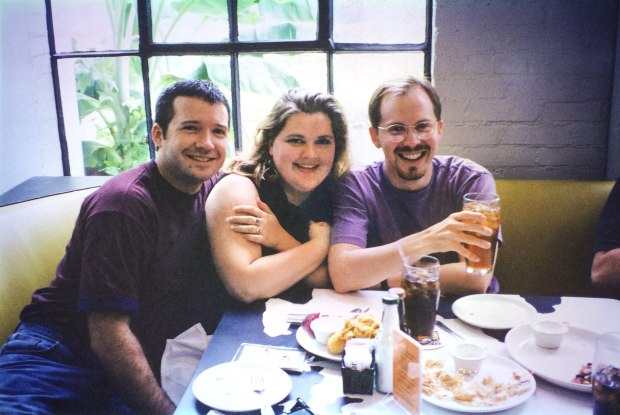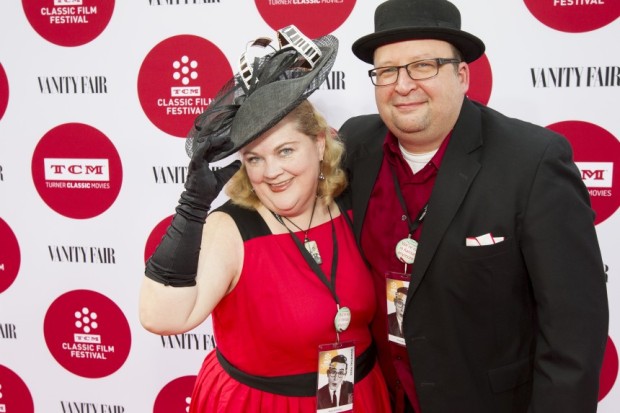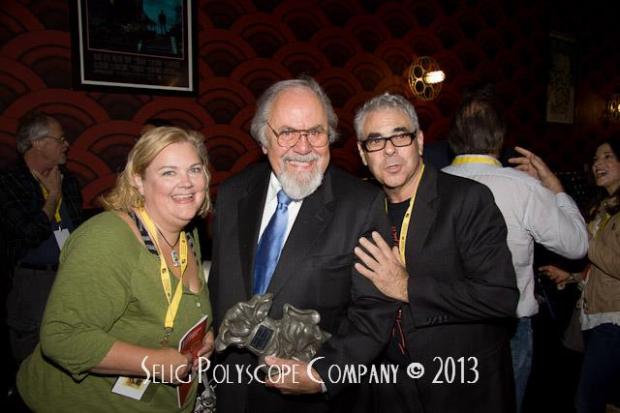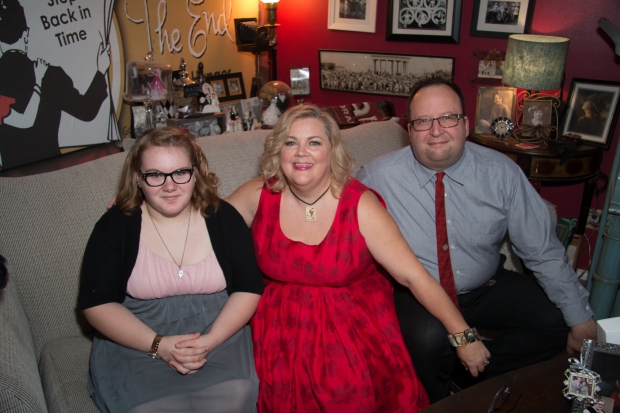
Bart Weiss. Photo credit: Robert Hart/Theater Jones
DALLAS: What do Bart Weiss, co-founder of Dallas VideoFest, and a polka band have in common?
A lot.
Let me explain. When Weiss arrived for our interview in Oak Cliff to talk about his background and the 28th annual VideoFest, which runs Oct. 12-18, he asked me about my drive down from Denton. Having been reminded of Denton, he began talking about a well-known polka band based there: Brave Combo, a Grammy-winning polka/rock/world beat band—and self-described “nuclear polka”—that has been part of the North Texas music scene for more than 35 years.
“I’ve known about the band almost as long as I’ve been in Dallas,” Weiss says. “They take all these songs and play them up-tempo and they attract a lot of people. They are really reviving the art form and keeping it alive.”
When he asked the band if they had ever had a film made about them, their response was “no.” He thought there was something wonderful about them so he said, “Let’s do it.” Now, Weiss has nearly 75 hours of performance footage of the band and is working on a documentary about them.
“When the group formed they could make money selling records. But now they have to survive on touring, these guys are not young and are constantly on the road. It could go away easily.”
“This is one little part of everything else I do,” Weiss says, modestly.
That’s an understatement, considering that like Brave Combo, Weiss is never lacking for things to do. When he’s not producing, programming, teaching or involved in some aspect of filmmaking, he’s spreading his infectious love for film wherever he can.

Bravo Combo. Photo credit: Jane Finch
How he got his (film) groove on
Weiss grew up in Philadelphia and chose Beloit College in Beloit, Wis. to study psychology. Being a quiet town, he soon discovered that Beloit had a flourishing film society that showed two films every night. He went as often as he could.
“These were films that I’d never seen before—foreign films, independent films—a totally new world for me,” he admits. Then one night someone in the dorm was showing experimental films and projecting them onto the dorm room walls. The films were like nothing he had ever seen before and he thought, “this film world should be really fun.”
When he had taken every film class that Beloit offered, he knew he wanted more. So he returned to the city of brotherly love and enrolled at Temple University, which had a reputable film department. There he earned a BA.
Weiss says his family was totally supportive of his desire to study filmmaking.
“My father’s idea of a good movie was a James Bond film,” he chuckles. “But my mother was more into the arts so she understood a bit more. They significantly helped me through graduate school, and going to graduate school at a relatively young age (right out of college) allowed me to teach as I was developing all the other things that I was doing.”
Next, Weiss studied documentary and narrative film making at Columbia University and earned an MFA in Film Directing in 1978.
After Columbia he began teaching at Manhattan College and College of Mount Saint Vincent. “I realized teaching was a really good thing, something I could do very well, and it’s remained very much a part of my life,” says Weiss, who teaches film at the University of Texas at Arlington.
Three pillars
Everything he does professionally comes from one core philosophical point of view: “The world can be changed by people watching good films.”
To him, film is an important medium because films have a transformative quality. Movies can cause audiences to have empathy for people they don’t know, help them understand things they don’t, and alter their moods.
There are three pillars in Weiss’ life that support this viewpoint: Running VideoFest, teaching aspiring want-to-be filmmakers, and making his own work.
“I want to teach people how to have a positive impact,” he says. “I want to show films that present different ways of dealing with the world and I make films as well.” The security of teaching allows him to pursue all of his passions with the sense of vigor that he might not otherwise be able to.

Photo credit: Google images
In 1979, Weiss was offered his first tenure-track position at Charleston State College in Charleston, W. V. After a couple of years, he realized that he wanted more from his life and his work. So when he told a colleague, Don Pasquella, that he was ready for a change, Pasquella told him he had a job for him, teaching at Southern Methodist University (SMU) in Dallas.
At the time Pasquella was the head of SMU’s film program. While it wasn’t a tenure-track job, he told Weiss the position could be become one after he started teaching. So in 1981, Weiss gathered up his possessions and drove down to Texas. He excelled at his craft at SMU, but the tenure-track job never came and within two years he was without a teaching job. The quality of his work at SMU was validated in 2002, when one of his students, John Davis, was nominated for an Academy Award for his work in Jimmy Neutron: Boy Genius.
The video bar scene
“One of the great things about being in Dallas is that opportunities are everywhere if you look for them,” Weiss says.
One night while having dinner in a restaurant, a man struck up a conversation with him about how popular music videos had become in New York nightclubs.
“So he called me up, while I was still at SMU and said: ‘I just got this place on lower Greenville and I could either turn it into a gym or do that video club thing we were talking about. Do you want to do that?’” Weiss said yes and began working at On the Air in 1983.
It was a small place with a large TV screen in the front, and a DJ booth upstairs. In no time, the club became very popular. People would show up before and after going to other places.
“It was one of the few totally integrated clubs in Dallas, meaning: black, white, Latino straight, gay—every kind of people. It was an amazing place,” Weiss recalls.
Now that he was in the music business, he soon discovered that every major record label had an office in Dallas. So once a week he would go over to Warner-Electra-Atlantic, Polygram, and CBS records and ask for the latest VHS or Beta hi-fi copy of their music.
“We always had the newest material for all these records. People would dance to Devo, Talking Heads, and Michael Jackson videos. This was a big deal, a major cultural force.”

Michael Jackson’s Thriller. Photo credit: Google images
To add to the club’s music video collection, Weiss would take the 7-minute records and 3-minute videos and re-edit them to make dance versions. If a piece of music didn’t have a video, he would shoot one and reedit and recut it so people could dance to it.
As far as he knows, Weiss and his crew were the first DJs in Dallas to do record scratching. They also had VHS Beta decks wired through cable that allowed them to switch live and play images from all over. It was an incredible experience, he says.
Weiss had come from a long established tradition of making film, where you work on it a long time, and when it was finished, you had a print.
“At the club, I could easily cut a video to make it quicker or slower and then watch the audience’s response. It was like a gift to get a really difference sense of audience. Most filmmakers never get to do that, so it worked out really well,” Weiss says.
Weiss as a video columnist
When On the Air closed its doors, Weiss helped open The Video Bar in Deep Elum. While he worked there he met a lot of people, including writers for the Dallas Morning News (DMN).
“One day I said to one of the DMN writers, it would be nice to write a story about music videos and she said ‘good, work on it.’ ”
He was working on it when he got a call from the same woman, Ellen Kampinsky, now Senior Editor at Glamour Magazine, asking him if he would like to write a regular column on music videos.
“I’m not a good writer, it’s a struggle for me, too much ADD to focus to write well,” he laughs. “Ellen worked with me for about a month and helped develop me into an almost acceptable writer.”

Photo credit: Googles images
Then came budget cuts.
Next, he literally went across the street, to the Dallas Times Herald, and they picked up his column. At about a month into it, Weiss discovered an emerging new home video business and told his editor he wanted to write a column about what was new in music video. So he would find out what was renting and selling and in his column, list what was popular.
Then came more budget cuts.
Next, he traveled to New York and sold his column idea to United Features Syndicate and that worked well for a year and a half.
“I was in hundreds and hundreds of newspapers and paid $50 per week,” he chuckles. “My column was included in these slick packets filled with horoscopes, ads and all kinds of junk that went out with a lot of newspapers.”
“That was an exciting time in my life when I was writing.”
While he was writing, Weiss continued to teach part-time at the University of Texas at Dallas, Northlake Community College, the University of Texas at Arlington and the University of Texas at Austin.
The birth of VideoFest
One day, John Held, a friend who managed an alternative gallery in town, asked Weiss if he would like to produce a video art program at the Dallas Museum of Art (DMA). It sounded like a great idea to him, so they created an event called Video as a Creative Medium. It was a two-night event that showcased local and international work and it attracted a lot of people.
“It went way better than we had expected,” Weiss admits.
Yes, the event went better in more ways than one because during one of the two evenings, he met the woman who is now his wife, Susan Teegardin. Little did she know, the next year she would be working side-by-side with him on the first Dallas Video Festival.
Later when Held and Weiss met with Elizabeth Berry back at the DMA to discuss further plans, Held decided he was not interested in doing more. Suddenly, Weiss had an idea. “What if we do a video festival for four days? Berry said yes and instantly became the festival’s co-founder. “When do you want to do it?”
They looked at the calendar and scheduled the festival over four days in the fall of 1987.
“I had no idea what I was doing but there were a few things that I did know.”
One of which was to get a good video projector. Good projection was a challenge at that time and very expensive. Luckily, he had a contact in Las Colinas who owned a high quality projector. They made a deal and he had his projector.
Next he had to get the word out.
“I was still writing for the Dallas Times Herald, so I called the programmer at the USA Film Festival and asked how much they charge for an ad. He told me ‘$650 for a full page.’ ”
Then he called his contact at Warner Home Video and told him about the festival and sold him an ad for $650. Weiss sold three ads that day and had the funding to pay the festival’s projectionist and from there, he found interesting works and created the programs. He’s been producing the evolving festival ever since. Weiss never sold another ad beyond the first festival. As the festival’s programmer, it could be a perceived as a conflict of interest.
The nitty gritty about film and video
In 1987, there was an incredible difference between film and video, says Weiss.
“Right now people use the terms interchangeably, back then there was a lot of difference. Video was inexpensive and people were doing edgier documentaries. Artists (music, painting, sculpture) were using it but there were very few places to have their videos screened. Film festivals out there were screening films and did not know how to show video.”
At the time, other video festivals around the country were aimed at small niche audiences, but Weiss’ reach was broader, hoping to attract a more diverse audience. So it was important to have good projection, a classy program and good design elements. As a result, people responded positively.
He also had this idea: instead of individual tickets for each program, they would sell day and full festival passes.

Photo credit: DallasVideoFest.com
“I wanted people to come because of a film connected to a political or a social issue or a cultural identity issue they are interested in. But my hope was that they would come to see a particular program, then wander around and find other things to see that were interesting.”
Over the years Dallas VideoFest has covered a large body of work including the history of video art and documentaries, just in terms of media. And each year they have programs about how media affects all of us. Weiss believes it’s important to understand the media’s role in our lives.
At this year’s festival, one of the films that will be screened is called The Brainwashing of my Dad, directed by Jen Senko. It’s about her father, who starts watching Fox News and listening to Rush Limbaugh. She soon notices a change in him. The film covers the history of how right wing media has evolved.
Weiss says we are at the intersection of art and technology and as different technology emerges, he wants to showcase the many ways art can be made from it, from video walls to virtual reality, to high definition.
“We do show films like other festivals, but there is a total difference in what we do…every year we drastically try to change and do something we’ve never done before,” Weiss says. “I tell my board, if there isn’t a possibility of failing I’m not interested in doing it.”
He is serious about that.
A triple hit
This year Weiss has included two new works that he says are radical. Last year, The Lodger, a 1927 silent Hitchcock film was set to a musical score performed by the Dallas Chamber Symphony. This year they’ve added a third dimension: dance.
On opening night, VideoFest will present the 1927 silent film, Metropolis, along with an original musical score by composer Brian Satterwhite and again performed by the Dallas Chamber Symphony. Making this a triple collaboration is dance, choreographed by Christopher Dolder and presented by SMU’s Meadows Dance Ensemble. The dancers will perform on two platforms at the Dallas City Performance Hall while the film rolls and the musicians play.

Photo credit: DallasVideoFest.com
Dallas Chamber Symphony Artistic Director Richard McKay is very excited about this year’s alliance.
“What’s so special about the program is that we are pioneering a new day of digital collaboration,” McKay says. “We’ve created a cohesive experience between film, music and dance so nothing seems separate. And working with Bart, who is an expert in silent film, makes this a wonderful partnership. He is great working with people and a good influence on all of us.”
That’s the number one new thing. The number two new thing happens during the weekend evening programs of the festival. Before each of the film screenings, percussionists, poets, and performance artists will perform. The purpose, Weiss says, is to bring the entire artistic community into the festival.
There’s something about Big D
Like most things in his life, producing a television show for KERA was not something he sought out or planned to do. But friends at the station suggested he create a show, called Frame of Mind, which features independent films produced by Texas-based professional filmmakers. So he did. And a few years later, when both producers left the show, he in 1995, he became the sole producer.
“It started out being on the air once a month, then once a quarter, then whenever I had time. Then last year we got together and made this a real TV show with a regular season.”
It’s incredible he says, that someone who doesn’t work for KERA is able to program for the station.
“There is something about the Dallas community that will let me do this and it’s really rare,” Weiss admits. “Most cities, most film festivals don’t talk to each other or help each other.”
Weiss serves on festival juries (watching and evaluating films), and does Q&As in Dallas and beyond. This year he worked with the McKinney Classic Film Festival and the Asian Film Festival of Dallas as well as many others.
“He a funny guy,” says Alicia Chang, Executive Director of the Asian Film Festival. She serves on the board of the Video Association of Dallas, which Weiss is president of. The two support and help each other. “He has so many interests and projects he’s involved with and still offers to help each year. He’s what you think of when you think of an artist—extremely passionate and cares about people.”
“It’s the personalities within the art community,” Weiss says. And in the same vein, people who teach film and video work together. Whether it’s SMU or UTA or UNT. “There’s a real spirit of cooperation.”

Downtown Dallas. Photo credit: Googles images
Finding a home at UTA
Weiss joined the film program at the University of Texas at Arlington 17 years ago. It’s a place, he claims, where students don’t make student films, they are students making films.
“We don’t let our students make films that don’t mean anything or don’t have the potential to change the world. We are really hard on our students, if they bring something in and it isn’t right, they do it and again and again.”
Most of his students don’t come from privileged backgrounds. Many are first generation college students, so making it in the film business is a really big deal, Weiss says. “Sometimes it’s fighting their parents to let them do this.”
As we were wrapping our interview, he tells me a story about a student named Iris Lopez. Having made some nice films in his media class, he asked her if she had shown them to her father. She said her father was not interested and didn’t support her decision to study filmmaking. In her next class with him, she made a beautiful Spanish film about two kids who were broke and hard up. At the film’s screening, Weiss was facilitating a Q&A and said, “I understand there is someone special here tonight.” Iris responded, “Yes, my father,” then motioned to the back of the theater where he was seated. Unexpectedly, her father stood up and in front of everyone, told her how proud he was of her. In that moment, the entire dynamic of their relationship changed.
“We do things like that at UTA,” he said as he wiped the tears from his eyes.
Bart Weiss believes that the world can be changed by people watching good films, whether they’re about the media or a polka band.
Listening to him passionately speak about his life’s love, there’s no doubting that he’s right.
For information about the more than 200 films that will be screened during the festival beginning Oct. 13, click here.

Photo credit: Google images

This feature is also published on Theater Jones. Click here to view along with full coverage of the festival.









 Where:
Where:




